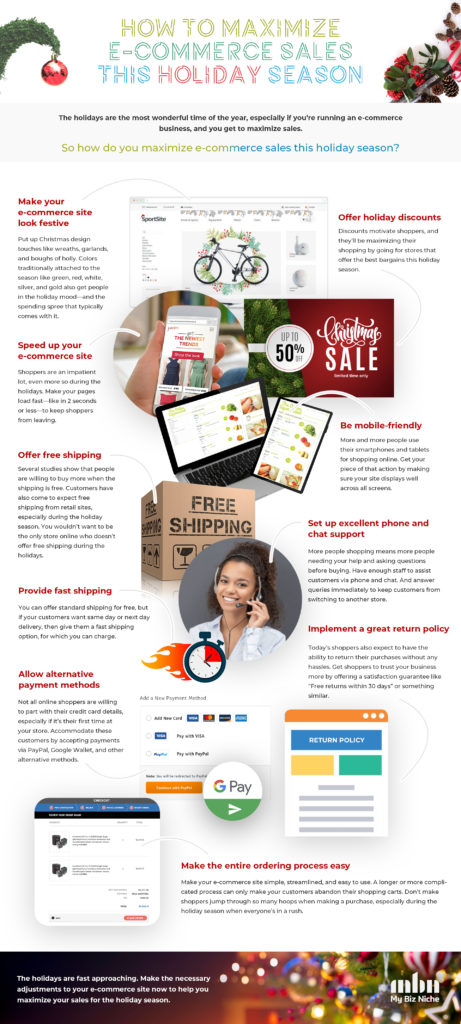As a new concerning wave of the Omicron coronavirus variant sweeps the world this 2021 holiday season, shops and stands are forced to close down — again. Thus, leading customers globally to remain at home as part of ‘lockdown’ measures and which further increases online purchases.
Indeed, it’s been reported that it’s too early to detect what kind of impact Omicron will have on the consumer’s mental health as well as shopping behaviour. However, it still shouldn’t change the fact that eCommerce brands must always brace for the worst and possibly the best as we wrap up the holidays, including the New Year.
In quarter one, and with the previous COVID-19 variant, Forbes reported on Adobe’s behalf that global eCommerce sales will reach $4.2 Trillion as online spending continues to surge. So, it wouldn’t be surprising that this growth will exacerbate even more during December, especially Christmas Day (which falls on a Saturday) and New Year’s eve.
Many shoppers, for example, have been planning for early deliveries of gifts, actively checking the hottest online deals, requesting updates on out-of-stock orders, becoming more likely to return to abandoned carts, and more. Those with remote work are especially going all out.
That’s why players in the eCommerce market need to remain updated on this year’s merry landscape to get a general feel of what customers demand and how to adapt your website best to reflect those changes.

Top consumer trends for the 2021 holiday season and how to maximize their eCommerce sales
We share three major global consumer trends for the most wonderful time of the year. We also tie them in with an accompanying infographic that details what you can do to optimize your platform and increase retail eCommerce sales.
1. Jingle your ringtone bells for mobile shopping remains top
It should come as no surprise that mobile or smartphone usage will remain the most popular online shopping method this holiday season and likely for years to come.
According to a recent global consumer survey shared by PwC, 41% of surveyed consumers reported that they use their phones daily or weekly to shop online. Whereas, only about 39% of them did so six months back and around 12% five years ago.
So, mobile spending is definitely here to stay, and digital-first brands will need to make their desktop site and mobile app more ‘festive’ while operating at a faster speed, opting for that fully immersive omnichannel shopping experience. More mobile-friendly tips are in the infographic below.

“How To Maximize E-Commerce Sales This Holiday Season” infographic provided by My Biz Niche, a leading digital marketing agency in the U.S.
2. Despite high Omicron cases, high optimism raises online spending
The same PwC survey further shows an oddly high surge of consumer optimism. On average, 61% of respondents recently indicated that they felt optimistic about the future, and 18% felt otherwise. It could very likely be because of the COVID-19 vaccination. Even more so, that high sense of hope seems to be manifesting in how much customers are spending.
At the same time, and as McKinsey shows, social media plays a huge role in consumer spending, particularly those living in the United States and in need of a holiday pick-me-up or inspiration. The two expected big spenders tis’ season are ‘high-income’ professionals and millennials, with 50% of the worker class whistling carol tunes while browsing online. 47% of the younglings aged 18-25 also feel the “fa-la-la” spirit.

Regarding product categories, it’s even expected that there will be bigger spending on travel, discretionary, and entertainment merchandise. Therefore, online retailers should rethink their holiday discount strategies, return policies, order fulfillment, and alternative payment method solutions.
3. Santa needs a faster sleigh as impatient customers want things now, thus easily switching brands
Despite all the unexpected turbulent changes throughout 2021 and the preceding year, what has remained close to many shoppers’ hearts is their value for price and convenience. In other words, many consumers have grown used to the economic ‘surprises’ that by this time around, if and when their favorite brand (for instance) doesn’t have what they want, they will likely and quickly move on to the next seller who does have it. Patience has grown thin among global shoppers.
The aforementioned McKinsey research confirms that buyers still very much prioritise value (40%), convenience (34%), and product availability (31%). Online retailers should then expect very few customers to wait in line for out-of-stock items to return.
Instead, it’s that time of the year to replace old stockings with new strategies that support the increasing year-over-year online spending. Consider more flexible delivery options like free shipping and improving your customer service support.




